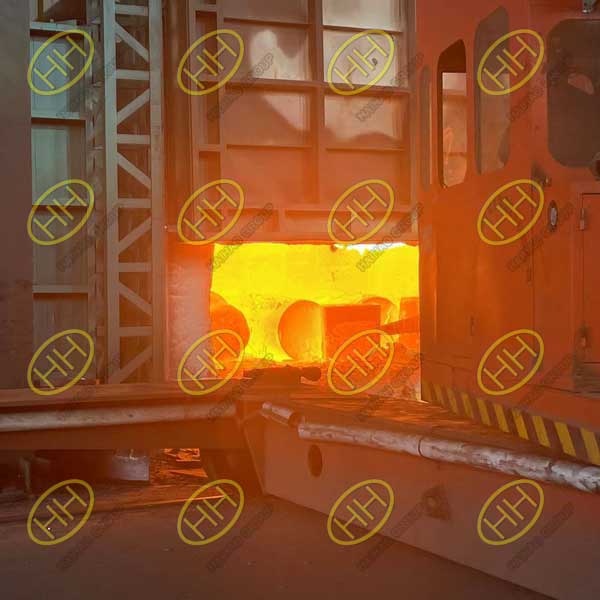Haihao Group unveils the forging process of austenitic metal
For years, Haihao Group has been the mainstay in the forging field and is committed to mastering advanced forging technology. Not long ago, a forging project in Russia in which we collaborated with China National Petroleum Corporation was underway. We take this opportunity to invite you to gain an in-depth understanding of the complex process of austenitic metal forging, revealing the expertise that underpins our commitment to excellence.
1. Introduction to Austenitic Metal Forging
Austenitic metals, known for their remarkable resistance to corrosion and oxidation, present a unique set of challenges and opportunities in the forging realm. The forging process for these metals involves a meticulous orchestration of heating, shaping, and cooling to harness their full potential.
2.Forging Heating Stage
Given the distinctive thermal properties of austenitic metals, careful consideration is required during the heating stage. With a low thermal conductivity at lower temperatures, a gradual and controlled heating approach is adopted until a specific temperature plateau is reached. It is crucial to elevate the temperature gradually above 850°C to initiate the forging process effectively. To counteract surface permeability issues, especially during high-temperature heating, it is recommended to conduct the process in an oxidizing medium, mitigating the risk of surface cracks.
3.Forging Temperature Considerations
The initial forging temperature for austenitic metals should not surpass 1220°C to prevent the formation of delta ferrite at high temperatures. Simultaneously, the final forging temperature should not drop below 825–850°C to avoid the precipitation of metal compounds, which could lead to reduced material plasticity and potential cracking during further forging.
4.Forging Densification Techniques
Forging densification is a critical step in addressing internal porosity and refining the grain structure of austenitic metals. Various techniques such as anvil elongation, wide flat anvil high-pressure forging, and center densification methods are employed. Each method contributes significantly to the final product’s performance and non-destructive testing quality.
5.Final Forming Stage
Achieving the ultimate form is pivotal in ensuring the dimensions, grain size, and overall quality of the forged austenitic metal. Gentle and rapid deformation methods are recommended during the final forming stage to guarantee uniform deformation across the entire cross-section of the material. Control over cracking is maintained by limiting the single hammer press volume to 5%–10%, with a final forging ratio within the range of 1.7–2.0.
6.Rapid Cooling Process
Following the final forming stage, rapid cooling is imperative to bring the internal temperature of the forged piece down to room temperature. This swift cooling process ensures the preservation of the refined grain structure.
In the realm of forging, Haihao Group continues to lead the way, navigating the complexities of austenitic metal forging with precision and expertise. Stay tuned as we unravel more insights into the world of advanced forging technologies, showcasing our unwavering dedication to forging excellence.

